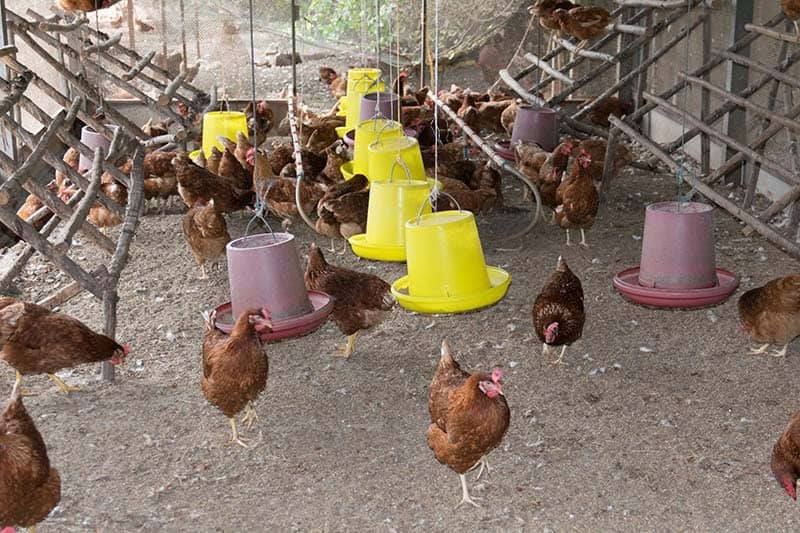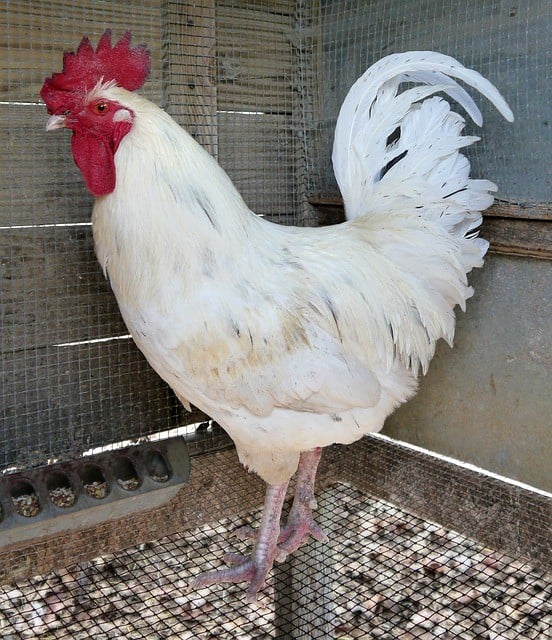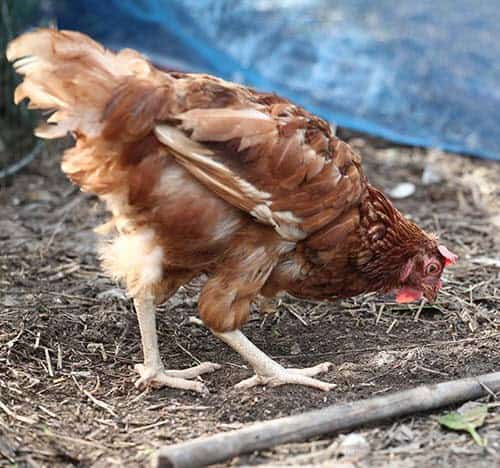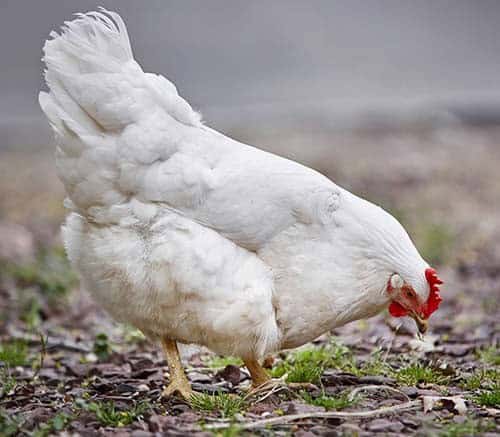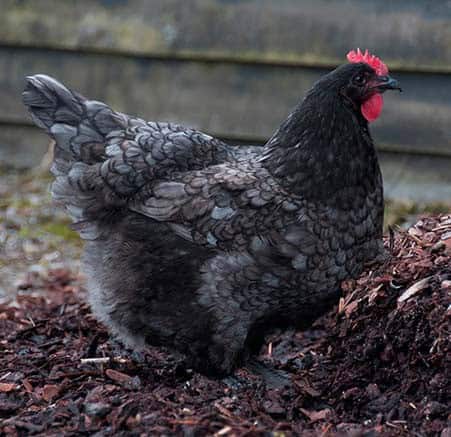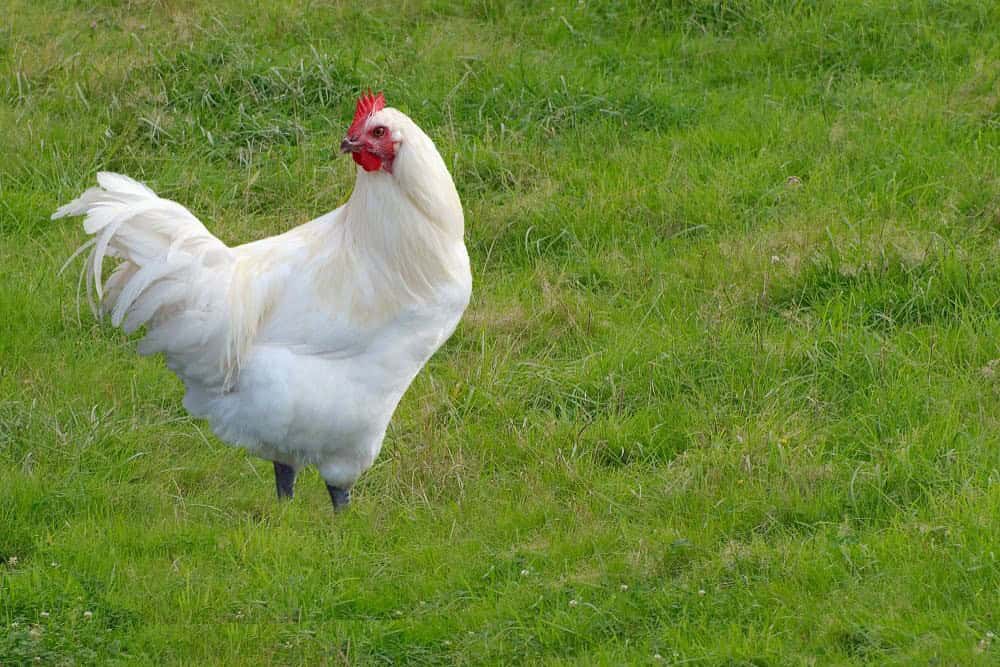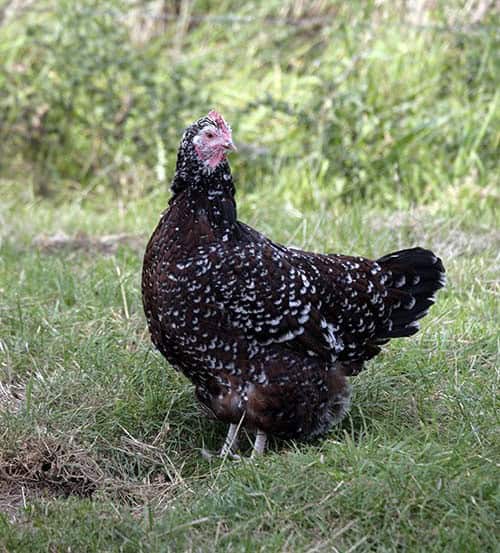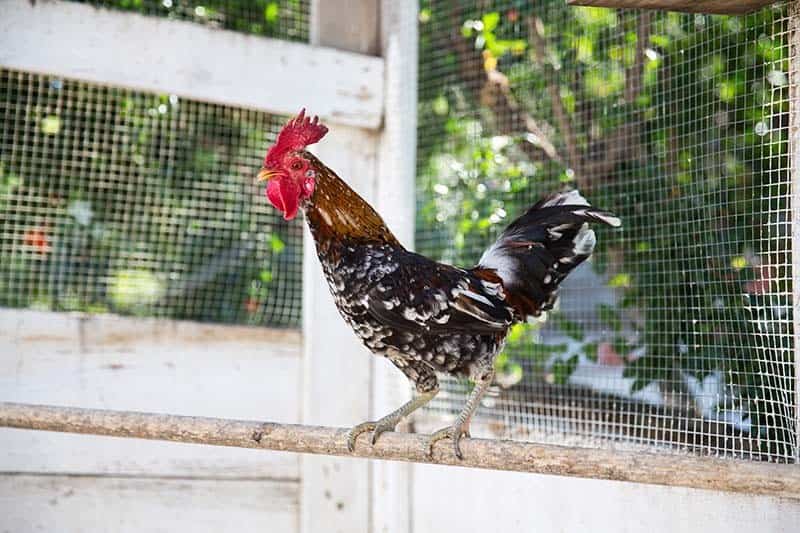For many people, there’s nothing quite like the joy of collecting fresh eggs from their own backyard chicken coop each morning. The sound of happy hens and the occasional crowing of a rooster can be a delightful way to start the day, evoking a sense of country living at its finest.
If you’re someone who dreams of experiencing this kind of rural bliss for yourself, then you’ve come to the right place.
In the following guide, we’ll take you by the hand and walk you through every step necessary to raise your own flock of backyard chickens – from initial setup to establishing a thriving and harmonious community.
By the time you finish reading, you should feel empowered and ready to take the plunge, whether that means buying your first set of hens or welcoming a rooster into your backyard family.
Do You Have What It Takes?
Before embarking on the adventure of raising backyard chickens, it’s crucial to address two essential questions: What are the regulations regarding backyard chicken-keeping in your area? Do you possess the necessary traits and resources to successfully care for these feathered friends? A comprehensive assessment is vital before welcoming your first flock.
Considerations include whether keeping chickens is even legal in your jurisdiction, as well as factors like space availability, access to clean water, and most importantly, a genuine commitment to ensuring their happiness and health. In the following chapter, we’ll delve into the fundamental requirements for raising backyard chickens. Continue reading by visiting Chapter 1: Can You Raise Chickens?
Choosing the Breeds
As you prepare to explore the diverse world of chickens, it’s essential to first clarify your motivations for keeping these birds. What do you hope to gain from your flock? Beyond the joy of raising them as beloved pets, there are practical benefits to consider. For many chicken keepers, eggs and meat are top priorities. Before delving into the characteristics of specific breeds, take a moment to acquaint yourself with some of the most popular varieties for egg production and meat purposes.
Egg Layers
White Leghorns are renowned for their exceptional egg-laying abilities, producing an average of 280 eggs per year. While they can make great additions to any backyard flock, it’s essential to note that these birds can be quite energetic and flighty when startled. This characteristic may not suit all chicken keepers, particularly those seeking a more docile breed.
In contrast, Rhode Island Reds lay slightly fewer eggs, around 260 per year, but their feisty nature means they require more experience and handling skill. On the other hand, Golden Comets are known for their friendly demeanor, producing an estimated 250-300 eggs annually. Their gentle temperament makes them an excellent choice for beginners, offering a stress-free introduction to raising chickens.
Meat Breeds
The choice between Cornish Cross, Jersey Giant, and Bresse breeds for your poultry farm depends on your specific goals and resources. The fast-growing Cornish Cross, also known as Broiler, is a popular option due to its rapid maturation at around 4-6 weeks, resulting in a smaller investment of time and resources. Female birds typically weigh around 8 pounds, while males average 12 pounds.
On the other hand, the Jersey Giant breed requires a bit more patience, taking approximately 20 weeks to reach harvest size. However, their larger size and impressive weights, averaging 10 pounds for females and 13 pounds for males, may be worth the extra time investment. Bresse, a premium meat breed, is known for its exceptional tenderness and can be harvested at around 7 pounds of meat per bird after an average of 16-20 weeks.
Although they come with a higher price tag due to their breeding quality, having a pair on hand can provide long-term benefits.
Dual Purpose Breeds
The Black Australorp, known for laying an egg per day under ideal conditions, boasts a friendly nature while remaining vigilant of its surroundings within the flock. This large bird has the potential to provide 5-8 pounds of meat when its laying years come to an end, depending on its sex. Similarly, the Speckled Sussex is renowned for its regular egg-laying habits and protective roosters, which can be both beneficial and detrimental to the flock.
Once this breed’s laying days are behind it, you can expect a 7-9 pound bird suitable for consumption, again dependent on the individual’s sex. The Rhode Island Red, with its exceptional egg-laying abilities, is another popular choice that yields 6-8 pounds of meat when its time to retire from egg production has passed. These breeds’ shared traits – high productivity and temperament – serve as crucial factors in selecting the ideal breed for your property.
While some may prioritize one characteristic over the other, it’s essential to consider both when deciding which birds to bring onto your land. This is particularly important if you have other animals, pets, or children sharing your space.
Prepare the Housing
When it comes to raising chickens, providing a suitable place for them to rest is crucial. One of the most common questions chicken keepers ask is where their flock should sleep. The answer lies in understanding the various housing options available and determining which one best suits your needs. In this section, we’ll delve into the different types of shelters you can use to house your chickens, as well as offer guidance on how to prepare your backyard for their new home.
To start, let’s cover the fundamental basics.
Chickens Need Adequate Space
When it comes to accommodating chickens in their coop, providing sufficient space is crucial. A single chicken typically requires around 3-4 square feet of room. However, the more expansive quarters you can offer, the better your birds will thrive and the cleaner the coop will remain. Not only will this lead to a more content flock, but it will also reduce the likelihood of disease transmission between birds when they’re not forced to inhabit cramped spaces together.
Your Birds Need Roosts
When it comes to housing your chickens, one crucial aspect often overlooked is providing adequate roosting space. Unlike some farm animals that prefer to sleep on the ground, chickens naturally gravitate towards perching and wrapping their feet around bars or structures. To accommodate this instinct, your chicken coop should incorporate roosts or horizontal perches made from branches or rounded wood.
While simplicity is key, it’s essential to ensure that these roosts are rounded, making it easy for the birds to grasp with their feet. A general rule of thumb is to provide at least 8 inches of perch space per bird, ensuring they have ample room to roost comfortably. Furthermore, position the roosts in a way that allows each bird to have its own space, avoiding overcrowding and potential messes. To maintain cleanliness and hygiene, keep the roosts away from feeders and waterers.
Lastly, avoid stacking roosts vertically, as this can lead to unpleasant consequences; instead, create a safe and comfortable environment where your chickens can rest without disturbance.
They Need a Place to Lay
When it comes to egg-laying, the nesting box plays a crucial role. It’s essential to locate these within your chicken house, where your hens can retreat each morning to lay their eggs in peace. The general rule of thumb suggests that you should provide at least one nesting box for every three chickens. While this is a good starting point, it’s not uncommon for individual birds to develop a preference for certain boxes over others.
If possible, consider increasing the number of boxes you offer, unless space constraints make it impractical. Ultimately, providing an ample supply of comfortable and accessible nesting boxes will help ensure your hens remain happy and healthy.
It Must Be Secure
When it comes to securing your coop, safety should be your top priority. As you’re aware, your hens can be attractive prey for various animals. To prevent unwanted visitors from getting in, ensure that there are no gaps or weaknesses in the structure. A robust approach would involve using plenty of chicken wire and opting for latches that are impossible to figure out, even for a curious toddler. If a child can’t open your coop, it’s unlikely that a raccoon or other predator could either.
Additionally, consider investing in a solid floor or embedding chicken wire into the ground, which will stop any would-be diggers in their tracks. This fundamental aspect of coop design lays the groundwork for more advanced considerations. Next, we’ll delve deeper into housing options and provide guidance on building your own coop if you choose to take the DIY route.
Feeding Your Chickens
Chickens are surprisingly non-fussy eaters, consuming a wide range of food options. One effective way to feed your flock is the full-feeding method, where you fill a feeder in the coop and replenish it as needed. This approach allows your chickens constant access to sustenance. You might wonder if keeping the feeder constantly stocked is wasteful, but there are compelling reasons for this approach. Firstly, chickens tend not to overeat.
Secondly, they possess an impressive ability to manage their food intake biologically. If the feeder appears empty, hens may perceive a food shortage, leading them to cease laying eggs. This isn’t ideal. On the other hand, if the feeder is consistently full, your hens will have no concerns and continue to lay eggs uninterrupted. Different breeds of chickens require varying amounts of food, while seasonal fluctuations also impact their appetite.
A general guideline is to provide one bucket of feed for every three chickens you have, adjusting as needed based on individual bird needs. For a more precise estimate, an adult laying hen consumes roughly 1.5 pounds of feed per week and drinks approximately 0.5 liters of water daily. The type of food you choose to fill the feeder with is entirely up to personal preference.
You can opt for store-bought scratch grains, cracked corn, or layer feed, or take a more organic route by raising your own fodder, feeding table scraps, mealworms, or exploring other affordable chicken feeds. While feeding chickens may seem straightforward, it’s crucial to also consider their nutritional and supplemental needs.
Should You Free-Range?
While housing and feeding your chickens may seem like the most pressing concerns, it’s equally important to consider their ability to forage freely. The benefits of raising free-range chickens are undeniable, but they also come with significant drawbacks. One of the primary issues is that many first-time chicken owners become complacent in their routine and leave their birds outside without proper care or consideration.
This can lead to unintended consequences not only for your own well-being, but also for those around you. Free-ranging should never be taken lightly; it requires thoughtful planning and dedication. Before embarking on this approach, it’s essential to weigh the pros and cons of raising free-range chickens.
Pros to Free-Ranging Your Flock
Chickens require less food when given the opportunity to free-range and forage for their own sustenance. As they naturally peck and scratch, they’re able to locate a diverse array of bugs and other invertebrates, reducing their reliance on store-bought or homegrown feed. This autonomy also translates to reduced coop space needs, as birds tend to spend most of their time outdoors, only seeking shelter when weather conditions are unfavorable or when they’re resting.
In turn, this reduces the overall maintenance requirements for the coop, as the absence of constant occupation means less mess and fewer chores for the farmer. With a free-range flock, the need for frequent cleaning is alleviated, making it an attractive option for busy farmers looking to streamline their responsibilities.
Cons to Free-Ranging Your Flock
Chickens, being natural prey animals, are inherently at risk when venturing beyond the safety of their coop. This vulnerability extends not only to their own well-being but also that of their human caregivers and even neighbors. The allure of free-ranging chickens can be irresistible, yet it’s crucial to acknowledge the inherent risks involved.
Predators will inevitably take advantage of this open invitation, posing a significant threat to the flock’s integrity.
It’s not just a matter of chance encounters; rather, predators will actively seek out these easy targets, leading to the potential loss of valuable birds.
Moreover, chickens’ instinctual behavior extends beyond their natural foraging habits. They’ll often investigate and rummage through gardens, flowerbeds, and other areas, potentially causing damage or disrupting carefully tended plots.
This curiosity can lead to unintended consequences and a significant amount of time spent cleaning up after them.
�n addition, the very purpose of free-ranging – providing an easy egg-laying experience – can quickly become an exercise in futility. With eggs being deposited haphazardly across the landscape, the daily hunt for these hidden treasures becomes an all-too-familiar routine.
The Mid-Ground, Safer Alternatives to Free-Ranging Your Flock
When it comes to giving your chickens the freedom to roam outside, there are several options to consider. One approach is building a chicken run, which is essentially a strip of fencing that can be topped or left open. This setup allows your flock to exit their coop, engage in some natural behavior like scratching and basking in sunlight, all while remaining within a safe and protected area. Another alternative is to construct a chicken yard.
This is a larger, fenced-in space that provides ample room for your birds to explore, scratch, peck, dust, and engage in any other outdoor activities they desire. The key difference between a run and a yard is the size – yards tend to be more expansive than runs. Ultimately, whether you opt for free-ranging or not will depend on various factors unique to your situation.
As a chicken owner, it’s essential to weigh the pros and cons and make an informed decision that aligns with your specific circumstances.
How to Keep Your Chickens Healthy
When it comes to raising chickens, you’ll inevitably face three significant challenges: diseases, pests, and predators. These hurdles can be daunting, but it’s essential to acknowledge that they are an inherent part of the process. While some of your flock may not survive, this reality shouldn’t deter you from taking proactive measures to ensure their health and well-being.
Beyond these major concerns, there are other issues that can impact your chickens’ happiness – and yours – such as behavioral problems like pecking order and fighting birds, molting, and noise complaints from neighbors. In this chapter, we’ll delve into the ins and outs of chicken health management, covering topics like predator control, common diseases and pests, first-aid techniques, and more.
How to Keep a Clean Coop
Maintaining a clean environment for your chickens is crucial for their overall well-being. To achieve this, it’s essential to prioritize regular cleaning of their chicken coop. Aim to accomplish this task at least once a week, if not more frequently, as dirty conditions can quickly become a breeding ground for disease and discomfort. Additionally, make sure to update the nesting material daily to create a comfortable and inviting space for your hens.
Clean the Floor
Start by thoroughly clearing the floor of your coop. If you’re dealing with a dirty floor, consider implementing the deep litter method. If not, grab a pitchfork and scoop up all the material into a wheelbarrow. You can then repurpose it in your compost pile.
Refresh Nesting Material
Maintaining cleanliness in your hen house is crucial, as it can significantly impact egg production. Consider making it a habit to clean out your hens’ nesting boxes on a daily or every-other-day basis. A dirty nesting box can discourage your hens from laying eggs, so prioritizing this task is essential for ensuring a steady supply of fresh eggs.
Clean the Feeder and Waterer
When it’s time for cleaning, start by thoroughly draining and emptying the feeder and waterer. Use a garden hose to wash out any debris, allowing them to air dry completely. When it comes to sanitizing these essential components, be cautious not to use harsh chemicals that can irritate your flock’s sensitive respiratory systems. Instead, consider using natural vinegar-based solutions for scrubbing, as they pose no harm to your feathered friends.
Clean the Roosts
To begin the process of cleaning the roosts, start by using a garden hoe to gently remove any droppings that have accumulated. If some areas appear particularly stubborn, you can mix equal parts water and vinegar in a spray bottle and apply it directly to the affected spots. When handling chicken poop, it’s essential to take precautions to avoid coming into contact with it. Wear gloves at all times to prevent the risk of infection or illness while working with your flock’s waste.
Empty the Run
To complete the cycle of keeping your backyard flock thriving, don’t forget to give your run some TLC as well. Open the door and thoroughly clean out any lingering debris or waste. This is crucial in maintaining a healthy environment for your chickens, as they can quickly become stressed and develop health issues if they’re constantly walking on dirty ground. Once you’ve emptied the run, replenish it with fresh material to create a clean and inviting space for your birds to roam.
By prioritizing regular maintenance of both the coop and run, you’ll be well on your way to raising happy, healthy hens that will reward you with an abundance of eggs.
Getting Eggs (and Meat) from Your Chickens
With the foundation of a happy and healthy flock established, it’s time to dive into some of the most pressing questions surrounding raising chickens for eggs and meat. How many birds should you keep to supply your family with a steady supply of both? When can you expect your hens to start laying, and what if they’re not quite cooperating? In this chapter, we’ll tackle these and other common queries head-on, providing valuable insights to help you optimize your chicken-keeping experience.
Hatching Eggs and Raising Chicks
As your flock matures, their productivity and numbers will naturally decline. You’ll notice a decrease in egg production, and some individuals may succumb to age-related mortality, disease, or predation. To sustain your operation, it’s essential to introduce new generations of chickens. While purchasing new birds is an option, hatching eggs from your existing flock offers a more fascinating and cost-effective approach.
This chapter delves into the intricacies of mating chickens, collecting fertilized eggs, and successfully hatching them. More critically, you’ll learn how to care for newborn chicks and integrate them seamlessly into your flock. As you progress through Chapter 7 (Final): Hatching Eggs and Raising Chicks, keep in mind that this process is considered advanced, with both significant benefits and responsibilities attached.
It’s entirely acceptable to forego this approach if it doesn’t align with your goals or preferences.
